Warehouse Pendant Lighting: How To Choose The Right System
Warehouse lighting is an essential aspect of any business and, while it may be a costly one, it should not be regarded as a negative impact on the bottom line of the business. There are many options for lighting systems and fixtures, warehouse pendant lighting being a very popular choice.
It’s true that warehouses lack natural light, house very high shelves and a lot of dark floor surface, but there are solutions to enhance the lighting without breaking the bank. This type of upgrade also comes with several benefits, such as:
- raise your business’ productivity;
- keep your maintenance costs low;
- ensure that the safety of your workers is a priority;
- reduce the environment impact;
- increase the efficiency of your business.
Based on a study made by the Department of Labor, the main accident factors are slips and falls. If your lighting system is not efficient and puts the safety of your employees at risk, that might result in injuries and loss of labor. An ineffective lighting can decrease the energy level of your team and, even though it doesn’t sound that important, it can be very damaging to your business.
Selecting the perfect lighting system for your needs can be very confusing due to the multitude of options available on the market now. As mentioned above, warehouse pendant lighting is one of the most popular choices, so here are a few considerations to take into account when looking to install this type of fixtures in your warehouse.
Warehouse Pendant Lighting: Brightness Considerations
One of the most impactful factors in providing the best lighting for your warehouse is the color of the walls and ceiling. Light colors can provide high reflectance, which allows the installation of light bulbs with lower lumen output. Using these efficient bulbs results in reduced power consumption, which can decrease the costs of electricity in your warehouse.
Another aspect that can help your business save electricity, and therefore money, is the presence of skylights. This also allows you to use efficient, lower voltage bulbs for your warehouse pendant lighting. One thing to consider is that, on sunny days, you’ll need to turn on fewer fixtures, which means you’ll need to rewire your lights to multiple switches.
Because pendant lights are hung from the ceiling and distribute light downwards, you need to make sure that they’re bright enough to illuminate properly at floor level. However, you also need to make sure there’s very little or no glare, in order to not decrease productivity. The installation of diffuser lens covers can help significantly reduce the glare from your lights.
Distribution of Warehouse Pendant Lighting
There are five types of light distribution that are currently used in commercial spaces, however warehouses only usually use two, either I or V, depending on their layout. If your business uses high shelves, then a type I distribution is perfect because it provides a long and slim light dispersion. Also, in this case, none of the brightness is blocked by the shelving.
If you are currently operating in an open plan warehouse, then a type V system will be more suitable for such a layout. It distributes the light evenly, the output spreading widely from all sides of the pendant fixture. This can be an either square or circular distribution, and it maximizes the efficiency of the space.
Type I
As mentioned above, Type I distribution provides a long and narrow lighting pattern. This is perfect for aisle ways, sidewalks and walkways. In this case, the warehouse pendant lighting is commonly installed in the center of the pathway. Because the pattern is a two-way lateral one, it shines light on two opposite sides of the fixture, with little to no light spilling out. It’s ideal for warehouses with tall shelving. It’s also more efficient to place the fixtures parallel to the aisles as opposed to a perpendicular alignment.
Type V
Type V light distribution provides direct light all around the fixture in a circular or square pattern. It’s ideal for large open spaces, such as storage warehouses with an open floor plan. If you have areas in need of a more defined edge, then the type V square distribution is the right choice for you. This is sometimes denoted as “type VS”. In addition to warehouses, this type of distribution is also commonly used for large parking lots, roadway medians and intersections, so basically any large area where light is required to be evenly spread.
How To Position Warehouse Lighting Fixtures?
Although distribution and brightness are vital aspects to consider when installing warehouse pendant lighting and more, there are other considerations as well. The positioning of the light fixtures is equally important. When talking about positioning, one aspect is critical: the spacing of the fixtures.
If the light fixtures are too close to each other, you risk experiencing hot spots. Additionally, they can cause glare, as the light from one of the fixtures can easily overlap with the one next to it. At the opposite end, if the fixtures are positioned too far away from each other, you risk dark areas, or what’s called “illumination drop-off”. Ideally, before installation, you’ll map out the position of your fixtures, consulting with your commercial electrician.





